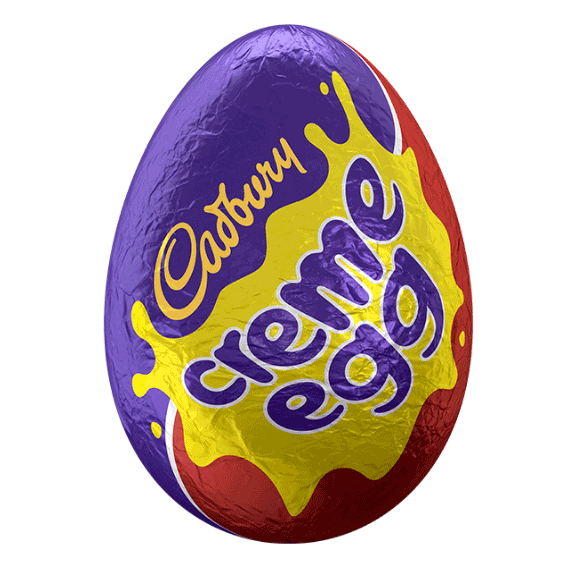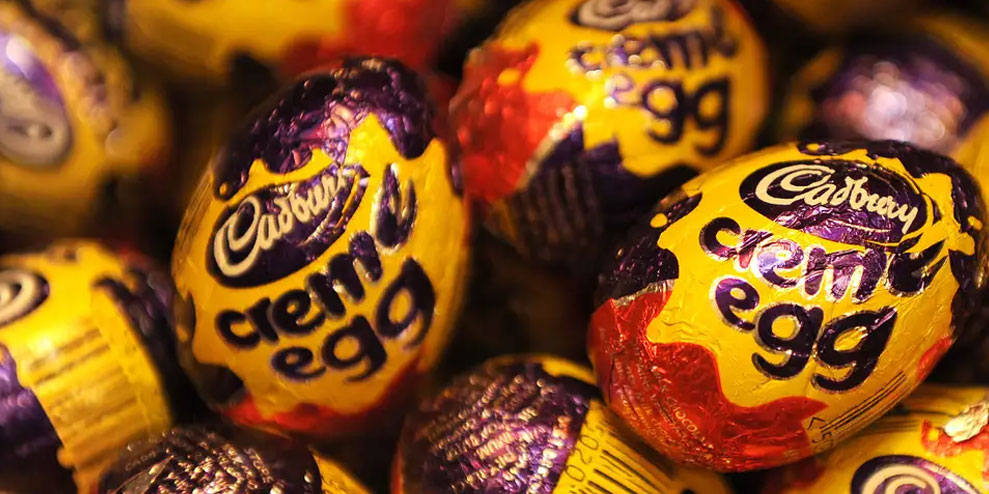With the launch of a new campaign for a unique marquee product, Mondelez is betting on a radical new channel strategy – Faris Yakob considers the Creme Egg.
Cadbury UK recently announced it was making streaming television central to the campaign for Creme Eggs. The 2020 communication approach will drop the mainstay medium of broadcast television in favour of running ads on Youtube, Facebook and outdoor media, which will be used to replace lost reach, while the budget stays the same.

The ads serve as ‘trailers’ because streaming TV is at the heart of the creative campaign. Cadbury is launching a tongue-in-cheek competitor called EATertainment that will host short films to enjoy while you are eating your egg. You can unlock the full set and enter to win a contest by scanning the wrapper.
In some ways, this is smart. Cadbury’s Creme Egg is an unusual product that is only sold between January and Easter, making it an ideal subject to do an in-market media mix test with since its truncated distribution helps manage variance in the comparisons. It has to build brand and push product in the same period.
Mondelez has a massive family of confectionary brands that could learn from this. The communication plan is resonant with the idea.
However, it’s still risky. Dropping TV is bold during the only sales period for a marquee product. The Creme Egg is the single best-selling confectionery item between New Year’s Day and Easter but sales dropped in 2016 following a change in formulation, so there is work to be done.
Outdoor comes close, but adding TV remains clear leader in delivering ‘very large business effects’, per Binet and Field in 2016.
As I shared in this column, the rise of subscription streaming presents new challenges and lots of brands are looking to experiment with their media mix. Whether creating a VOD platform for chocolate in the age of too-much-great-television-to-watch is a good idea remains to be seen, but there is a contest mechanic to drive sign up.
Either way, Cadbury is going to find out, and running live experiments in field is crucial, even, or rather especially, if they fail. However, when results do come in, it is easy to fall prey to overly simplistic conclusions.
As an industry, we tend not to share our failures. We promote our best in award shows and clients aren’t keen on sharing data. This hinders us learning about advertising effectiveness.
Simon Peel, media director at Adidas, bravely shared the results of a similar experiment at EFF Week. In 2017, their CEO also announced that it was dropping television because “the younger consumer engages with us predominantly over the mobile device. Digital engagement is key for us — you don’t see any TV advertising any more.” Simon stated that focusing on efficiency rather than effectiveness had led the brand to over-invest in digital advertising. So is TV good and digital bad? No, of course not.
The problem was as much organizational as strategic. Adidas had multiple agencies using different measurement frameworks and brand strategies, an organizational model that pit business units against each other, was overly focused on ROI – an inherently short-term efficiency measurement – and therefore reducing costs. In light of that, direct to consumer e-commerce jumped out as the most profitable sector of the business, despite being very small in volume.
As a result, much of the communication was focused on optimizing short term conversion metrics, supported in such by last click attribution measurement from Google. Again, this is part of a much wider issue than the naive binary of ‘TV vs digital’ media as advertising channels. As Peel said, “We had a problem that we were focusing on the wrong metrics, the short-term, because we have fiduciary responsibility to shareholders”.
The media brands use matters, but so does how they use it, of course. We increasingly tend to split advertising into two strands – brand building and sales activation – but both are necessary. Further, nothing is as simple and clear cut as it seems since all advertising does some blend of brand and performance, and everything must be considered holistically. Beyond the roles for communication, the largest driver of commercial variance in advertising campaigns is creativity.
According to Nielsen’s analysis of 500 campaigns across all media, creativity is by far the biggest advertising element driving effectiveness. The films on EATertainment include a post-apocalyptic thriller, episodes on mindful egg eating from the GOOru, ASMR clips and various other trending pastiches. Whether the creative performs, it will have to work harder since it has to drive people to a new platform, rather than reaching them directly through bought media and to compete with all other content whilst also working for the brand: the challenge for all ‘brand content’. Perhaps there are hidden ‘easter eggs’ in the Easter Egg content to keep consumers engaged.
Hopefully, there is a robust measurement framework in place that give some granular sophistication to what they learn. Otherwise, innovation of product and communication tend to dominate the conversations.
I got to very lightly touch the Cadbury Gorilla commercial [as the comms partner we brought the idea of the remixes and commissioned them, as well as developing the website and digital]but the incredible global cultural success needed subtle analysis for the true commercial impact. Cadbury’s is also releasing a Creme Egg Trifle product called Levels of Joy, but the proof they need won’t just be in that pudding.
–
This article first appeared in www.warc.com
Seeking to build and grow your brand using the force of consumer insight, strategic foresight, creative disruption and technology prowess? Talk to us at +9714 3867728 or mail: info@groupisd.com or visit www.groupisd.com

